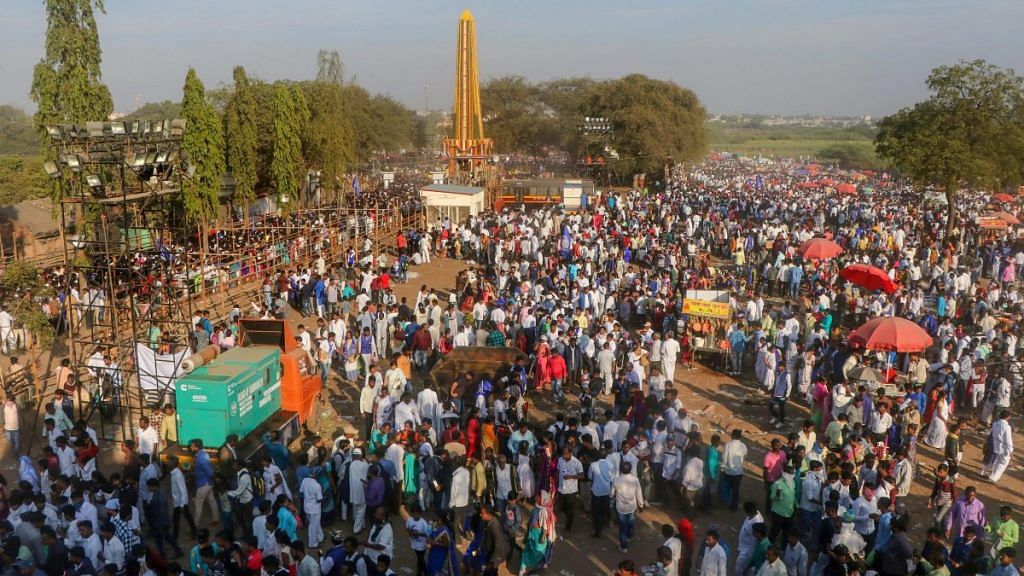Mainstream Indian historiography – whether it is nationalistic, Left or liberal versions – has a problem dealing with the battle of Bhima Koregaon. It doesn’t fit into the narrative of Hindu nationalism or the classic anti-colonialism frame. This historical dilemma is the reason why it is easy for the BJP and the Narendra Modi government to dub an anti-caste battle commemoration as the handiwork of ‘Urban Naxals’ and dangerous. Because Indian history has largely been silent on it.
The term Anglo-Maratha war is a misnomer. It was actually the Brahmin Peshwa rulers who fought against the British in that war, so it should be called the Anglo-Peshwa war. The Peshwa rulers had usurped the Maratha kingdom from the descendants of Shivaji Maharaj, and suffered the final defeat at Koregaon on 1 January 1818.
What makes this war complex for Indian historians was the composition of the British Army. Most soldiers on their side were the so-called untouchables, mostly Mahars from Maharashtra, who were facing persecution in the Peshwa Raj. According to one account, “The British, with just 834 infantrymen — about 500 of them from the Mahar community — and 12 officers defeated the 28,000-strong army of Peshwa Bajirao II.”
Also read: Junglemahal is a book on peace process with Maoists. But it frightens the Indian state
A puzzle for historians
For mainstream historians, there is nothing glorious to say about this battle, because the Indian side lost. But Dalits see it differently. For them, it was not merely a battle between the British and the Peshwas but reclamation of their prestige following centuries of caste discrimination, subjugation and humiliation.
This explains why Dr. B.R. Ambedkar, then a young lawyer fighting against caste discrimination, visited the war memorial at Koregaon in 1927. This is why lakhs of Dalits assemble there every year on the first day of January. For them, it is not merely a political act; it is like a pilgrimage, a celebration of aspirations, a community festival.
Dalit-Bahujan from Maharashtra and later from different parts of India assembled at the site every year until 2018 – when some local Hindutva leaders decided to challenge them, and do so violently. Later, the police clamped down on Left activists for their participation by terming their life-long social work as “anti-national activities” and sending them behind bars.
Before 2018, the celebration at victory columns of Koregaon has no known history of violence or confrontation. Now, a google search of Bhima Koregaon throws up news related to violence or conspiracy. This is important because this is how collective memories are formed in the Internet age.
Dalit activists allege that the law enforcement agencies have gone soft on the actual perpetrators of violence, Sambhaji Bhide and Milind Ekbote, even as lakhs of people who assembled at Bhima Koregaon on 1 January 2018 remain branded as people without any agency to think and decide for themselves because they were ‘instigated’ by Leftist intellectuals – the same ‘Urban Naxals’ who couldn’t organise a single protest meeting of a few hundred people to demand their release from prison.
Also read: Indian democracy’s big contradiction – Dalits cherish Constitution, privileged want a rethink
Creation of a bogey
The bogey of ‘Urban Naxal’ was a ploy to hide the real association – of Bhima Koregaon with the larger anti-caste struggle, painstakingly built over the years by Dalit activists. Dalits were assembling at Bhima Koregaon long before Naxalism or Naxalbari had even entered into the political lexicon of India – and even before the Communist Party in India was founded.
Associating Bhima Koregaon with Left or Naxal ideology is not just unfounded, but absurd as well. But the larger confusion about how to situate the battle explains why it was absent in the history textbooks.
So how do we make sense of Bhima Koregaon? We may use the deductive method by answering another question about what Bhima Koregaon is not.
– Bhima Koregaon is not about anti-colonial struggle, so it’s difficult to understand it from that matrix.
– Bhima Koregaon has nothing to do with the idea of India as envisaged by Gandhi-Nehru.
– Bhima Koregaon does not fit in the Hindu vs Muslim or Indian vs foreigner binary; rather, it punctures the idea of monolith Indians fighting against foreign rulers.
Commemorating the battle at Bhima Koregaon is an assertion of human values. It’s a claim by the large masses of economically and socially deprived communities that if pushed to the corner, they can revolt. They have done it before and their celebration signals they can do it again, maybe through democratic methods this time.
The author is the former managing editor of India Today Hindi magazine, and has authored books on media and sociology. Views are personal.
